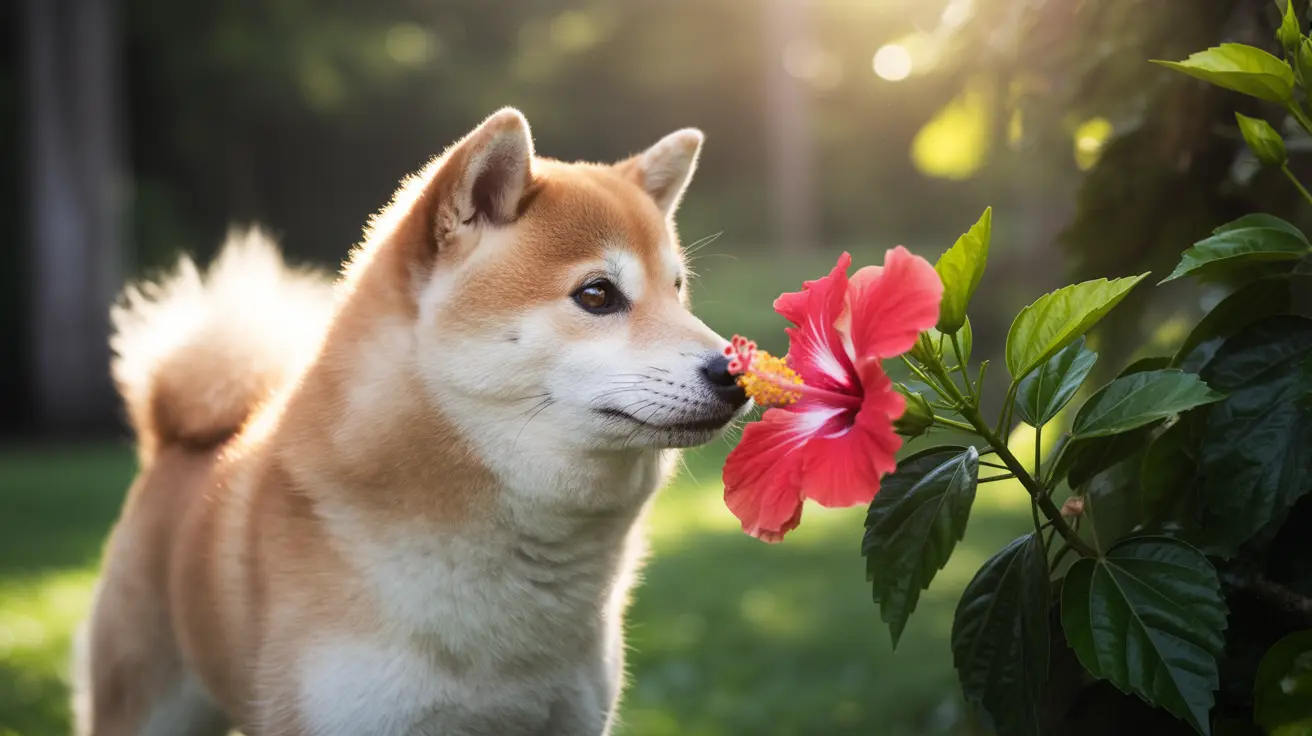If you're a dog owner with hibiscus plants in your garden, you might be wondering about their safety for your furry friend. While hibiscus plants are generally considered to have low toxicity, it's important to understand the potential risks and take appropriate precautions to keep your dog safe.
This comprehensive guide will explore the relationship between hibiscus plants and dog safety, including symptoms to watch for, prevention strategies, and what to do if your dog ingests these colorful flowers.
Understanding Hibiscus Toxicity in Dogs
Hibiscus plants, with over 200 species in their family, generally pose a low toxicity risk to dogs. The most common variety, Hibiscus syriacus (Rose of Sharon), is officially listed by the ASPCA as non-toxic to dogs. However, this doesn't mean these plants are entirely risk-free.
Different hibiscus varieties can contain varying levels of compounds that might cause mild gastrointestinal upset in dogs. The plant's roots typically contain higher concentrations of potentially irritating substances compared to the flowers and leaves.
Common Symptoms of Hibiscus Ingestion
If your dog consumes hibiscus, they may experience several mild to moderate symptoms:
- Vomiting and diarrhea
- Nausea and loss of appetite
- Excessive drooling
- Lethargy
- Mild abdominal discomfort
- Oral irritation or swelling
The severity of these symptoms typically depends on factors such as the amount ingested, your dog's size, and individual sensitivity to the plant.
Prevention and Safety Measures
To protect your dog from potential hibiscus-related issues, consider implementing these preventive strategies:
- Plant hibiscus in areas your dog cannot access
- Install barriers or fencing around hibiscus plants
- Remove fallen flowers and leaves promptly
- Supervise your dog while in the garden
- Consider alternative pet-safe plants for your landscape
When to Seek Veterinary Care
While most cases of hibiscus ingestion resolve on their own, certain situations warrant immediate veterinary attention:
- Large quantities of plant material consumed
- Severe or persistent vomiting and diarrhea
- Signs of significant oral irritation or difficulty swallowing
- Unusual lethargy or behavioral changes
- Any concerning symptoms that don't improve within 24 hours
Treatment Options and First Aid
If your dog has eaten hibiscus, treatment typically focuses on managing symptoms and may include:
- Monitoring for developing symptoms
- Providing plenty of fresh water to prevent dehydration
- Temporary dietary adjustments if recommended by your vet
- Supportive care and medications as needed
Frequently Asked Questions
Are hibiscus plants poisonous to dogs if they are ingested?
While hibiscus plants are generally considered to have low toxicity, they can cause mild gastrointestinal upset if ingested. The ASPCA lists common varieties like Rose of Sharon as non-toxic to dogs, but individual reactions may vary.
What are the symptoms if a dog eats hibiscus, and how severe can they be?
Symptoms typically include vomiting, diarrhea, loss of appetite, and mild lethargy. While usually mild and self-limiting, the severity can vary based on the amount consumed and the individual dog's sensitivity.
How can I prevent my dog from eating hibiscus flowers or leaves?
Plant hibiscus in restricted areas, use physical barriers, remove fallen plant material promptly, and supervise your dog while in the garden. Training your dog to "leave it" can also help prevent plant consumption.
Why is the Rose of Sharon hibiscus more toxic to dogs than other types?
There's actually some misconception here - Rose of Sharon (Hibiscus syriacus) is not necessarily more toxic than other hibiscus varieties. In fact, it's officially listed by the ASPCA as non-toxic to dogs.
Should I take my dog to a veterinarian if they show symptoms after eating hibiscus?
While most cases resolve on their own, seek veterinary care if your dog shows severe symptoms, has consumed large quantities, or if symptoms persist beyond 24 hours. It's always better to err on the side of caution when it comes to your pet's health.
Remember, while hibiscus plants generally pose minimal risk to dogs, being aware and taking preventive measures can help ensure your pet's safety while maintaining a beautiful garden.






